Building Tanzanian More Child Surgeries Network with Child Surgeries Tanzania and Selian Childrens Hospital
Tanzania, located in East Africa, is a country celebrated for its vast wilderness areas. It encompasses the plains of the Serengeti National Park, a safari mecca populated by the “big five” game (elephant, lion, leopard, buffalo, rhino), and Kilimanjaro National Park, home to Africa’s highest mountain. Offshore lie the tropical islands of Zanzibar, with Arabic influences, and Mafia, with a marine park home to whale sharks and coral reefs. The blend of diverse cultures, including Bantu, Arab, and Indian, contributes to a rich cultural tapestry. Tanzania’s economy is largely based on agriculture, but it’s also known for its precious minerals and growing tourism sector.

Sub-Saharan Africa faces significant challenges in providing adequate pediatric surgical care. This region, characterized by diverse cultures and socioeconomic statuses, has a high burden of surgically treatable conditions in children, including congenital anomalies, infections, and trauma-related injuries. However, limited access to healthcare facilities, a shortage of trained pediatric surgeons, and financial constraints hinder effective treatment. Many children suffer from preventable or treatable conditions that go unaddressed, leading to high morbidity and mortality rates. Efforts to improve this situation include increasing investment in healthcare infrastructure, training local medical professionals, and international collaborations to provide support and resources.
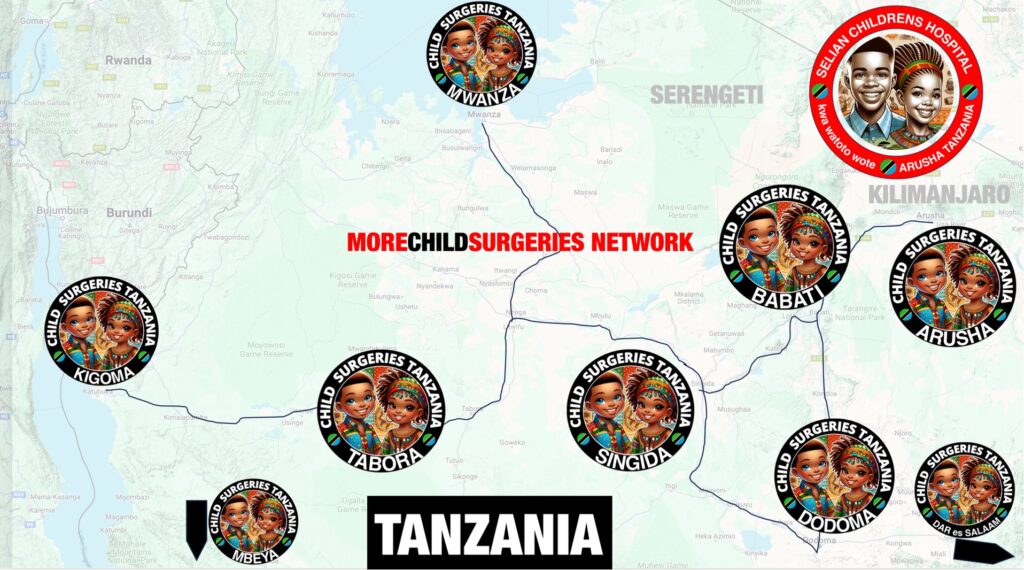
Serengeti
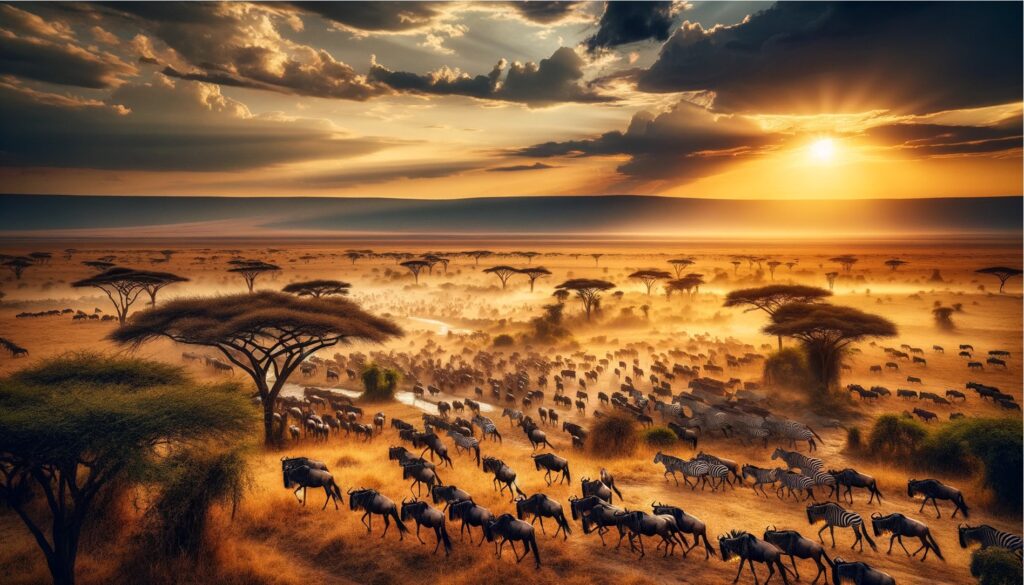
The Serengeti, a vast ecosystem in Tanzania, is synonymous with wildlife and untouched landscapes, stretching over 14,763 square kilometers. It’s a UNESCO World Heritage site famous for its annual wildebeest migration, an awe-inspiring spectacle of nature. In contrast to the wild beauty of the Serengeti, Tanzania also faces challenges with healthcare, particularly in pediatric surgeries.
Mwanza
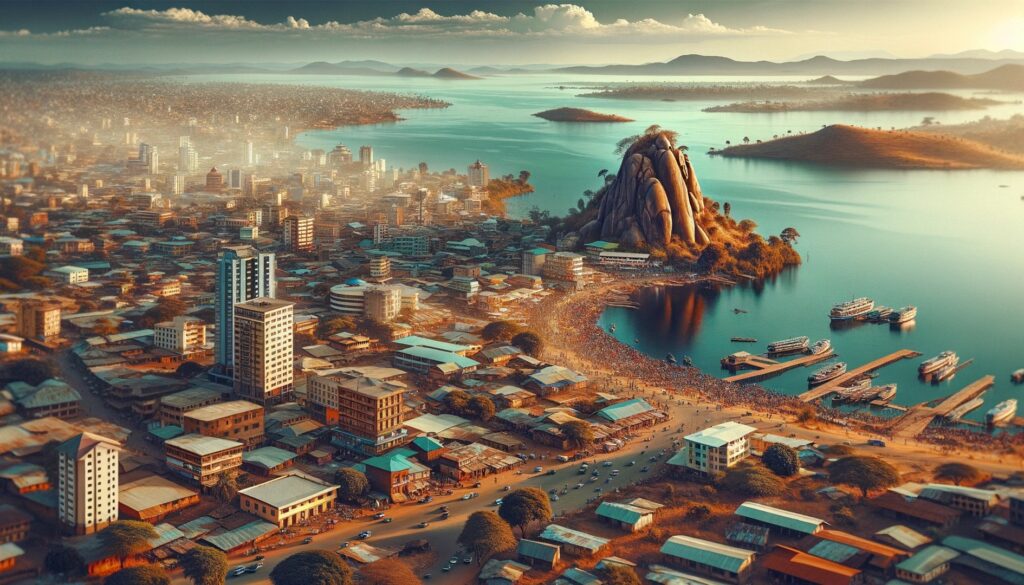
Mwanza is a port city on the shores of Lake Victoria in northern Tanzania. Known as the “Rock City” due to its rocky landscape, Mwanza is the country’s second-largest city with a population nearing a million. It’s a major commercial hub, particularly for the fishing industry, as Nile perch is exported across the world from here. The city’s economy also benefits from nearby gold mines. Mwanza is culturally diverse, with numerous ethnic groups coexisting, and it’s a gateway to the Serengeti National Park. The Bismarck Rock, a balance rock formation, is an iconic symbol of the city.
Mbeya
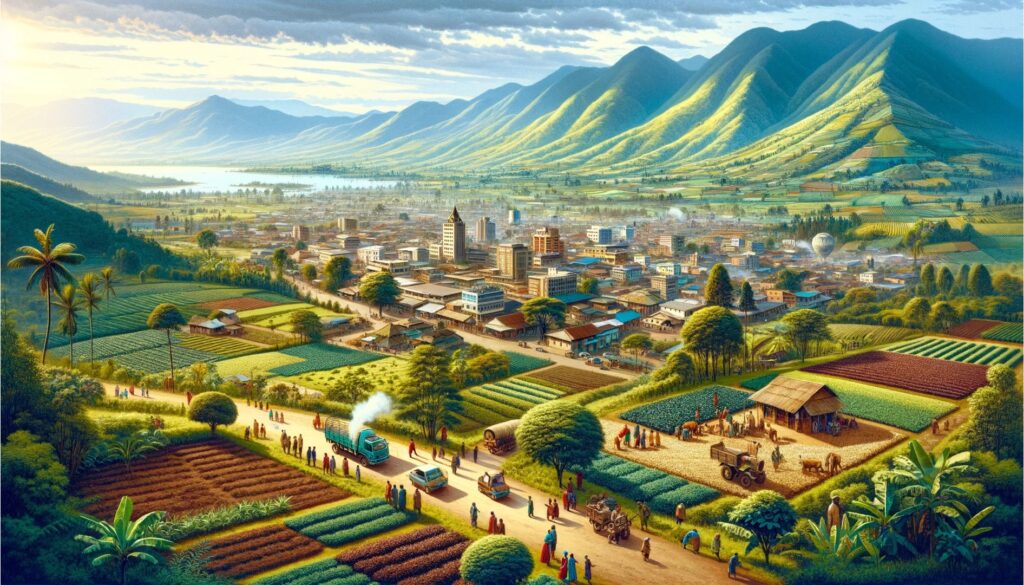
Mbeya is a thriving city in southwestern Tanzania, known for its picturesque landscapes and rich agricultural land. With a population of over 385,000, it’s the urban heart of the Mbeya Region. Surrounded by mountains and hills, the city has a mild climate, making it ideal for farming crops like coffee, tea, and bananas. Mbeya is also a gateway to various attractions, including the Mbeya Peak, Lake Nyasa, and the Kitulo Plateau, famed for its unique flora. The city’s economy is buoyed by agriculture, trade, and mining activities. Mbeya’s cultural diversity is reflected in its vibrant markets and local festivals, making it a distinctive blend of rural charm and urban growth.
Tabora
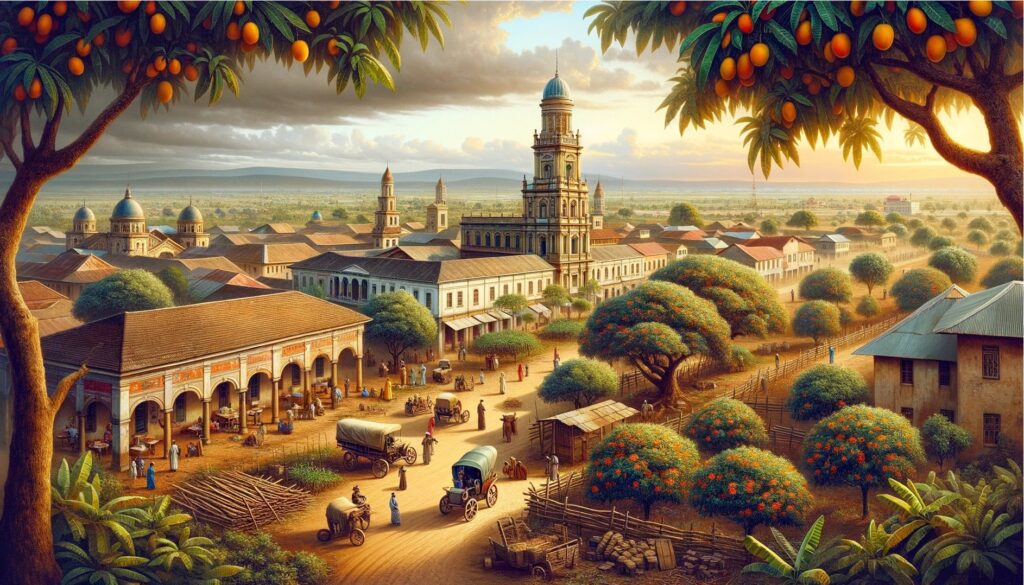
Tabora is a historic city located in western Tanzania, renowned for its role in the 19th-century caravan trade. With a population of about 226,000, it’s the capital of the Tabora Region. The city’s economy is anchored in agriculture, notably tobacco, which is a major cash crop. Tabora also has a significant beekeeping and honey production industry. The city is known for its wide streets lined with mango trees and its blend of colonial and traditional architecture. It’s a key transportation hub, connecting various parts of the country. Tabora’s rich history is evident in its museums and historic sites.
Singada
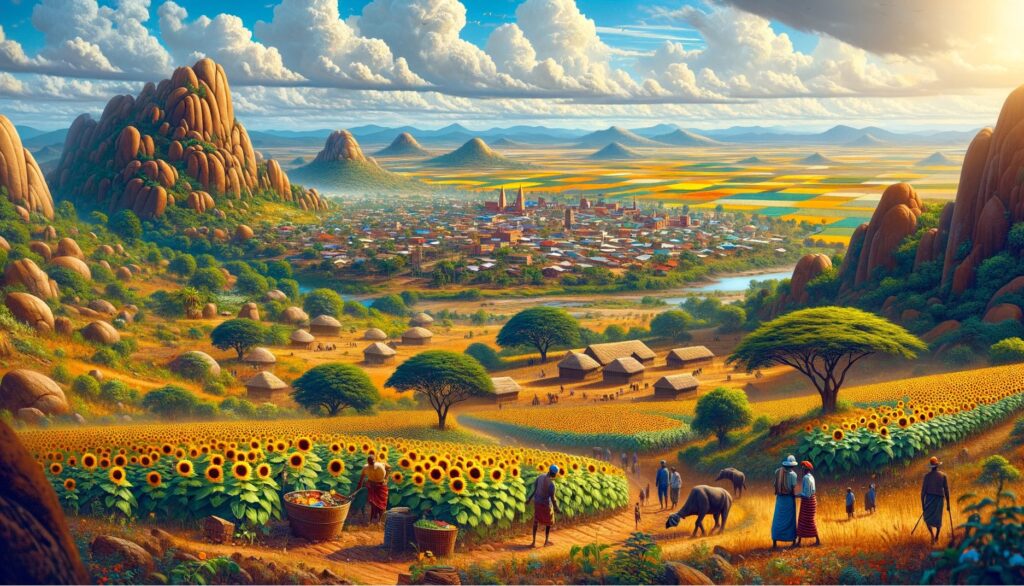
Singida is a serene town in central Tanzania, known for its sprawling sunflower fields and vibrant agricultural sector. As the capital of the Singida Region, it has a population of around 75,000. The town’s economy primarily revolves around agriculture, with sunflower oil production being a significant contributor. Singida is also rich in mineral resources like gold and diamonds, adding to its economic diversity. The landscape is dotted with rocky hills and baobab trees, offering a picturesque setting. Culturally diverse, Singida hosts various local festivals and markets. It’s a town that combines the charm of rural life with modest urban development, reflecting Tanzania’s varied tapestry.
Dodoma
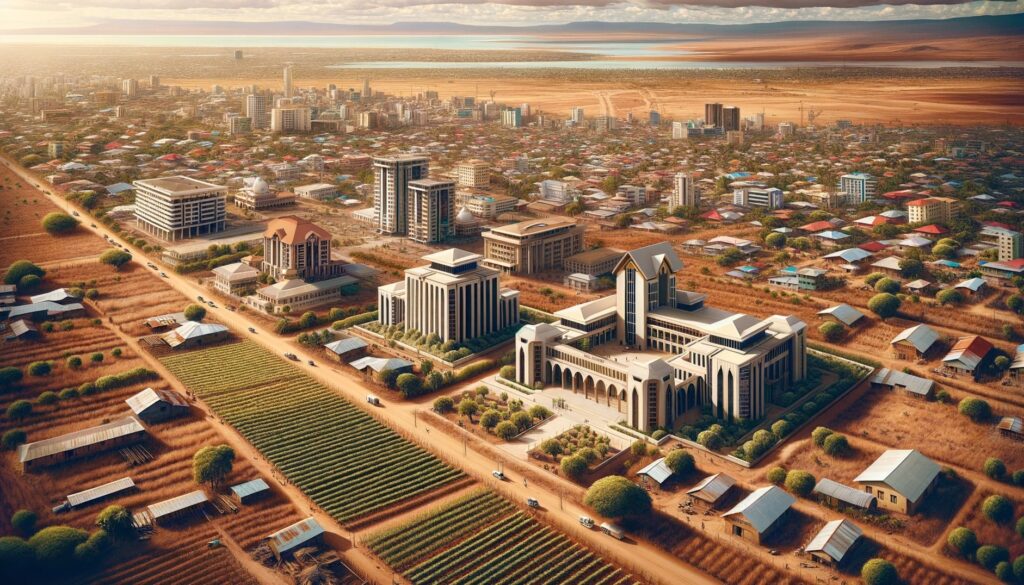
Dodoma, the capital city of Tanzania, is located in the country’s central region. With a population of over 410,000, it’s a key political and administrative center, housing many government offices, including the Tanzanian Parliament. The city’s development accelerated after its designation as the capital in 1973, shifting from Dar es Salaam. Dodoma is known for its semi-arid climate and wine production, a rarity in East Africa. The city’s layout is characterized by wide streets and sprawling spaces. It also serves as a hub for central Tanzania, with a growing economy centered on trade, agriculture, and wine-making. The University of Dodoma, one of Tanzania’s most prominent universities, is a significant presence in the city.
Dar es Salaam
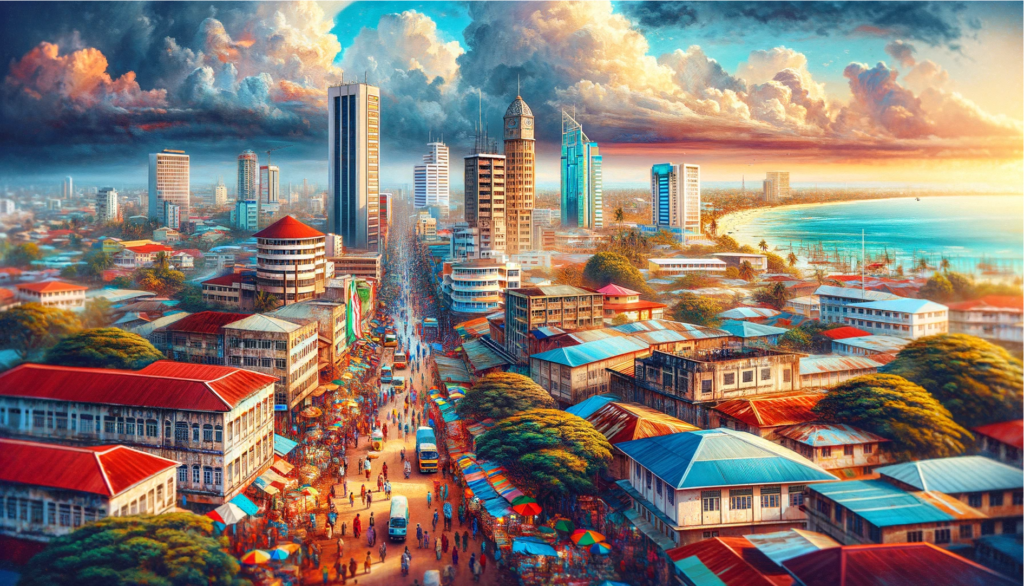
Dar es Salaam, once the capital and still the largest city of Tanzania, is a bustling metropolis with a population exceeding 6 million. Situated along the Indian Ocean coast, it’s the country’s economic and cultural heart. Known for its vibrant street life, bustling markets, and diverse architecture, the city reflects a blend of African, Arabic, and Indian influences. Dar es Salaam is a major port and gateway to Zanzibar and the African Great Lakes region. The city boasts beautiful beaches, islands, and a thriving arts scene. Despite rapid urbanization, it retains a charming mix of tradition and modernity, making it a vital hub for commerce, industry, and tourism.